- Home
- Antonia Fraser
The Weaker Vessel: Women's Lot in Seventeenth-Century England
The Weaker Vessel: Women's Lot in Seventeenth-Century England Read online
The Weaker Vessel
Woman’s Lot in Seventeenth-century England
ANTONIA FRASER
PHOENIX
PRESS
5 UPPER SAINT MARTIN’S LANE
LONDON
WC2H 9EA
Contents
Cover
Title
Contents
Dedication
By Antonia Fraser
About the Author
List of Illustrations
Author’s Note
Chronology of Important Events 1603–1702
Prologue: How Weak?
PART ONE: As It Was – This Blessed Knot
1 A Wife Sought for Wealth
2 Affection Is False
3 Crown to her Husband
4 The Pain and the Peril
5 Are You Widows?
6 Poor and Atrabilious
7 Unlearned Virgins
8 Living under Obedience
PART TWO: With the War – Stronger Grown
9 Courage above her Sex
10 His Comrade
11 A Soliciting Temper
12 Sharing in the Commonwealth
13 When Women Preach
PART THREE: Afterwards – A Continual Labour
14 Worldly Goods
15 Divorce from Bed and Board
16 Benefiting by Accomplishments
17 Petticoat-Authors
18 Helping in God’s Vineyard
19 The Delight of Business
20 Wanton and Free
21 Actress as Honey-Pot
22 The Modest Midwife
Epilogue: How Strong?
References
Reference Books
Plates
Index
Copyright
for
LECTISSIMA HEROINA ELIZABETH LONGFORD
By Antonia Fraser
Mary Queen of Scots
Cromwell: Our Chief of Men
King James VI of Scotland, I of England
(Kings and Queens series)
King Charles II
The Weaker Vessel: Woman’s Lot in Seventeenth-Century England
The Warrior Queens: Boadicea’s Chariot
The Six Wives of Henry VIII
The Gunpowder Plot: Terror and Faith in 1605
Marie Antoinette: The Journey
Antonia Fraser is the author of many widely acclaimed historical works including the biographies King Charles II, the recently republished Mary Queen of Scots and Marie Antoinette: The Journey which won the Franco-British Literary Prize in 2001 and was made into a film by Sofia Coppola in 2006. Most recently she has published Love and Louis XIV: The Women in the Life of the Sun King.
Antonia Fraser won a Wolfson History Prize in 1984, was made CBE in 1999, and was awarded the Norton Medlicott Medal by the Historical Association in 2000. She lives in London and has six children and eighteen grandchildren.
Illustrations
A family group c.1645 (Yale Center for British Art, Paul Mellon Collection)
The family of Sir Robert Vyner (National Portrait Gallery, London; now being restored)
Margaret Duchess of Newcastle (British Library)
Mary Countess of Warwick (Mansell Collection)
Ann Lady Fanshawe (National Portrait Gallery, London)
Lettice Viscountess Falkland (photograph by courtesy of the Courtauld Institute of Art)
Mrs Margaret Godolphin
A milkmaid
Susanna Perwick (British Library)
A countrywoman
The housewife and the hunter
The title page of The Needles Excellency
A scold’s bridle (British Library)
Execution of witches, 1655
A Boulster Lecture
A witch and her imps (British Library)
Dorothy Countess of Sunderland (Earl Spencer, Althorp, Northampton; photograph by courtesy of the Courtauld Institute of Art)
Mary Ward (Rev. Mother Superior General, Mary Ward Institute, Rome; photograph by Foto-Studio Tanner)
Brilliana Lady Harley (Mr Christopher Harley; photograph by P. G. Bartlett)
Brampton Bryan Castle (Hereford and Worcester County Libraries)
Illustration from ‘The Female Warrior’ (Bodleian Library, Oxford, Douce Ballads 1,79)
Illustration from ‘The Valiant Virgin’ (British Library)
Corfe Castle (Royal Commission on Historical Monuments)
Mary Lady Bankes (University Library, Cambridge)
Lady Bankes’s monument (by permission of the Vicar of Ruislip; photograph by Behram Kapadia)
Charlotte Countess of Derby
Lucy Hutchinson (from a private collection)
Eleanor Countess of Sussex (photograph by courtesy of the Courtauld Institute of Art)
Mary Lady Verney (Sir Ralph Verney, Claydon House; photograph by R. & H. Chapman)
Fishwife (reproduced by courtesy of the Guildhall Library, London)
‘Grandmother Eve’, as shown on an English charger (Victoria Art Gallery, Bath City Council)
Oliver Cromwell at the age of fifty (courtesy of Sotheby’s)
A Quakers’ Meeting (Mary Evans Picture Library)
Cromwell’s granddaughter, Mrs Bridget Bendish
Mrs Elizabeth Pepys (National Portrait Gallery, London)
Lady Isabella Thynne (by permission of the Marquess of Bath; photograph by courtesy of the Courtauld Institute of Art)
Basua Makin (Mansell Collection)
Mary Duchess of Beaufort and her sister Elizabeth Countess of Carnarvon (Metropolitan Museum of Art, New York, bequest of Jacob Ruppert, 1939)
Anne Countess of Winchilsea (National Portrait Gallery, London)
Rachel Lady Russell
Anne Killigrew (British Library)
Elizabeth Barry (E. T. Archive/Garrick Club)
Painting thought to portray Anne Viscountess Conway (Mauritshuis, The Hague)
Peg Hughes (The Earl of Jersey)
A London courtesan (The Museum of London)
Diana Countess of Oxford (Yale Center for British Art, Paul Mellon Collection)
Catherine Countess of Dorchester (National Portrait Gallery, London)
Mrs Jane Myddelton
Illustration from the The Midwives Book (British Library)
Seventeenth-century gynaecological instruments (The London Hospital)
Medal commemorating the birth of Prince James in 1689 (Cyril Humphris; photograph by courtesy of Spink and Son Ltd)
Satirical medal commemorating Prince James’s birth (Cyril Humphris)
Author’s Note
‘Were there any women in seventeenth-century England?’ This question was put to me by a distinguished person (male) when I told him the proposed subject of my new book; like another jesting interlocutor, he did not stay for an answer, but vanished up the steps of his club. This book is in part at least an attempt to answer that question.
Wherever possible I have quoted the voices of women themselves, in letters, in the few but poignant diaries, and in the reports of others. Obviously there are enormous difficulties with the written record where women of this period are concerned, in view of the fact that the vast majority below the gentry class were, through no fault of their own, illiterate. Nevertheless I have battled to breach the walls of this artificial silence. Indeed, if I have had a bias, it has been towards the unknown rather than the known; believing strongly in what we owe to ‘the number who lived faithfully a hidden life, and rest in unvisited tombs’, in the words of George Eliot’s moving conclusion to Middlemarch.
The idea of
writing such a book first came to me in 1970 when I was working on a biography of Oliver Cromwell; it occurred to me that a study of women in the English Civil War would produce some interesting results, in view of the spirited nature of the women in question, whether petitioning, defending castles or fighting alongside their husbands – a variety of activities, none of them particularly passive. Working on a life of Charles II, following these women through to the next generation, did nothing to diminish my ardour, but did show me how much more complicated the subject was than I had supposed.
After ten years of working on the seventeenth century I felt more enthusiasm than ever. But I did come to the conclusion that I must confine my study to England alone; although I had at an early stage wistfully contemplated including Scottish women, until the many differences in the laws as well as the society of the two nations convinced me that this was a separate subject. I also realized how important it was to take the hundred odd years from the death of Queen Elizabeth I to the accession of Queen Anne as a whole, if only to explore to what extent woman’s position in society did or did not improve with the passage of time.
This, then, is a study of woman’s lot: it is not intended as a dictionary of female biography in the seventeenth century, nor for that matter as an encyclopedia of women’s topics. I have selected those characters who interested me; omissions were not only inevitable, if the book was not to be of mammoth size, but also deliberate.
Obviously, no one writes in a vacuum, and to boast of being unswayed by the currents of opinion swirling about in one’s own time would be, like most boasts, foolish. During the twelve years in which I have been taking notes towards this book, the growth of feminism both as a force and an influence has been a spectacular phenomenon. But this book is, I hope, a historical work, not a tract. After all, to write about women it is not necessary to be a woman, merely to have a sense of justice and sympathy; these qualities are not, or should not be, the prerogative of one sex.
I have taken the usual liberties in correcting spelling and punctuation where it seemed necessary to make sense to the reader today. For the same reason I have ignored the fact that the calendar year was held to start on 25 March during this period, and have used the modern style of dates starting on 1 January throughout. This is an age which presents considerable problems to the writer, where the nomenclature of women is concerned. On the one hand, many of the them bore the same Christian name: in a host of Marys, Elizabeths and Annes, one learns to be grateful for the odd Jemima. On the other hand, equally confusingly, women at this period changed their surnames with frequency, due to marriage and remarriage. Sometimes, therefore, it has proved convenient to use a pet-name or diminutive consistently for a particular character; sometimes I have used the same surname or rank for a woman throughout the book (as for example Margaret ‘Godolphin’, antedating her marriage, and Margaret ‘Duchess’ of Newcastle, despite the changes in her husband’s title). My aim in all this has been clarity for the reader.
I wish to thank the Marquess of Bath for permission to quote from the Longleat MSS, and Miss Jane Fowles, Librarian and Archivist to the Marquess of Bath; Miss Cathleen Beaudoin, Reference Librarian of the Public Library, Dover, New Hampshire, for letting me see the Jon Scale MS on Quaker women; and the Wardens, Melvin and Sandra Roberts, of the Religious Society of Friends, Nottingham Meeting, for permission to quote from the letter of Isabel (Fell) Yeamans. I am grateful to the staff of numerous libraries, principal among them the Bodleian Library, the British Library, the Institute of Historical Research, the London Library and the New York Public Library.
I should also like to express my thanks to the following, who helped me in a variety of different ways over the years, from answering queries to conducting stimulating conversations: Dr Maurice Ashley; Professor John Barnard; Mr G.P. Bartholomew; Dr Chalmers Davidson; Mr Fram Dimshaw; Lt. Col. John Dymoke of Scrivelsby; Mr Peter Elstob; Miss Jane Ferguson, Librarian to the Royal College of Physicians, Edinburgh; Mr John Fowles; Ms Valerie Fildes; Reverend Mother M. Gregory IBVM; Pauline Gregg; Mrs Cicely Havely; Mr Cyril Humphris; P.J. Le Fevre; Sir Oliver Millar; Mr G.C.E. Morris; Sir Iain Moncrieffe of that Ilk; Mr Richard Ollard; Professor Elaine Pagels; Mr Derek Parker; Professor J.H. Plumb; Mr Anthony Powell; Dr Mary Prior; the Duke of Rutland; Ms Sally Shreir; Lady Anne Somerset; Emma Tennant; Miss Dorothy Tutin; Brigadier Peter Young.
Over the years I have much appreciated professional support from my publishers on both sides of the Atlantic, John Curtis of Weidenfeld and Nicolson and Robert Gottlieb of Knopf. In addition, I am deeply indebted to my daughter Flora Powell-Jones for her assiduous researches; to Mrs Hatherley d’Abo who showed herself a heroine typing the manuscript; to Linden Lawson of Weidenfeld’s for patient editorial overseeing; to Dr Malcolm Cooper for the Chronology and to Gila Falkus for the Index.
Lastly I would like to acknowledge with affection and gratitude three early readers of the book: my mother, to whom it is justly dedicated; my daughter Rebecca; and my husband, who was, as he is fond of pointing out, ‘the first’.
ANTONIA FRASER
All Hallows Eve, 1983
Chronology of Important Events 1603–1702
1603 Death of Elizabeth I; accession of James I
1605 Discovery of the Gunpowder Plot
1611 Publication of the Authorized Version of the Bible
1614 The Addled Parliament
1616 Death of William Shakespeare
1620 Pilgrim Fathers sail for America
1621 Parliament issues Protestation against James I’s excesses
1625 Death of James I; accession of Charles I
1628 Assassination of the Duke of Buckingham; the Petition of Right issued
1629 Charles I dissolves Parliament (and rules without one until 1640)
1634 Raising of ship-money; imprisonment of Prynne
1638 Scottish National Covenant drawn up
1639 End of the First Bishops’ War
1640 The Short Parliament; the Second Bishops’ War; first sitting of the Long Parliament
1641 Execution of Strafford; the Grand Remonstrance issued
1642 Beginning of the First Civil War; Battle of Edgehill (23 October)
1643 Battles of Roundway Down (13 July) and first Newbury (20 September); Parliament signs Solemn League and Covenant with Scots; first meeting of the Westminster Assembly
1644 Battles of Cheriton (29 March), Marston Moor (2 July), Lostwithiel (2 September) and second Newbury (27 October)
1645 Introduction of the Self-Denying Ordinance and formation of the New Model Army; Battle of Naseby (14 June); execution of Laud
1646 Charles I surrenders to the Scots; end of the First Civil War
1647 Charles I imprisoned at Carisbrooke
1648 Start of the Second Civil War; Battle of Preston (17 August); end of the Second Civil War; Pride’s Purge
1649 Execution of Charles I; formation of the Commonwealth; Cromwell’s expedition to Ireland
1650 Cromwell leads campaign against Scots; Battle of Dunbar (3 September)
1651 Battle of Worcester (3 September); escape of Charles II
1652 Start of the First Dutch War
1653 Dissolution of the Rump Parliament; the Barebones Parliament; Cromwell becomes Lord Protector
1654 End of the First Dutch War
1658 Death of Cromwell
1660 Declaration of Breda; Restoration of Charles II; Act of Indemnity and Oblivion; marriage of the Duke of York and Anne Hyde
1661–5 Enactment of the ‘Clarendon Code’; Corporation Act (1661); Act of Uniformity (1662); first Conventicle Act (1664); Five Mile Act (1665)
1662 Marriage of Charles II and Catherine of Braganza; foundation of the Royal Society
1665 The Great Plague; start of the Second Dutch War
1666 The Fire of London
1667 End of the Second Dutch War; fall of Clarendon
1670 Enactment of the second Conventicle Act
1672 Charles II’s Declarat
ion of Indulgence; start of the Third Dutch War
1673 The First Test Act; marriage of the Duke of York and Mary of Modena
1674 End of Third Dutch War
1677 Marriage of Princess Mary and William of Orange
1678 The Popish Plot
1682 The Rye House Plot
1685 Death of Charles II; accession of James II; the Monmouth Rebellion; the Bloody Assizes
1687 James II dismisses Parliament and issues his first Declaration of Indulgence
1688 James II’s second Declaration of Indulgence; imprisonment of the Seven Bishops; birth of James’s son; overthrow of James II and arrival of William and Mary
1689 Start of joint rule of William III and Mary II; Bill of Rights and Toleration Act passed; start of the War of the Grand Alliance
1694 Death of Mary II; Triennial Act passed
1697 End of the War of the Grand Alliance
1701 Act of Settlement passed
1702 Death of William III; accession of Anne
PROLOGUE
How Weak?
It was a fact generally acknowledged by all but the most contumacious spirits at the beginning of the seventeenth century that woman was the weaker vessel; weaker than man, that is.
The phrase had originated with Tyndale’s translation of the New Testament into English in 1526 and was given further prominence by the King James Bible. St Peter, having advised wives in some detail to ‘be in subjection to your own husbands’, urged these same husbands to give ‘honour unto the wife, as unto the weaker vessel, and as being heirs together of the grace of life’, founding his remarks on those of St Paul, in his Epistle to the Ephesians.
By 1600 the phrase was freely employed – by Shakespeare amongst others – to denote either a particular female or the female sex as a whole. Throughout the century following, the words of St Peter, founded on those of St Paul, might form part of the Protestant marriage service as an alternative to a sermon: so that there was a fair chance that most women would listen to them at least once – on the most important day of their life, their wedding-day.

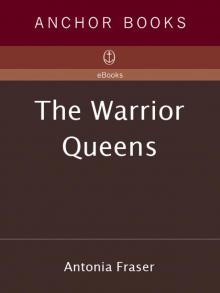 Warrior Queens
Warrior Queens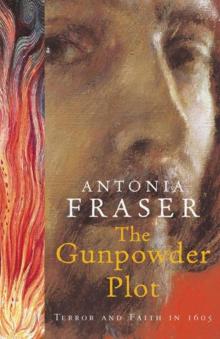 The Gunpowder Plot
The Gunpowder Plot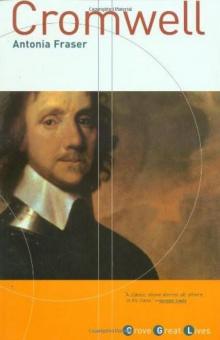 Cromwell
Cromwell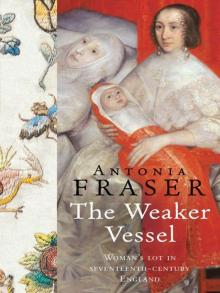 The Weaker Vessel: Women's Lot in Seventeenth-Century England
The Weaker Vessel: Women's Lot in Seventeenth-Century England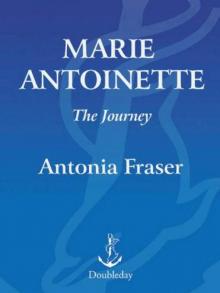 Marie Antoinette: The Journey
Marie Antoinette: The Journey Oxford Blood
Oxford Blood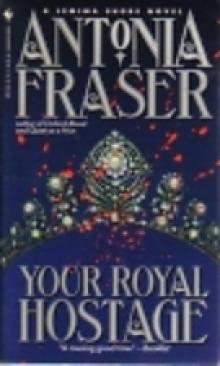 Your Royal Hostage
Your Royal Hostage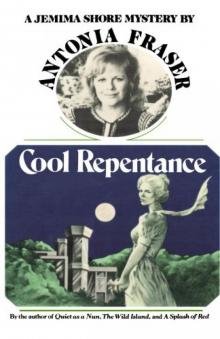 Cool Repentance
Cool Repentance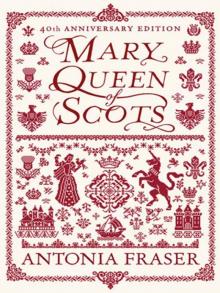 Mary Queen of Scots
Mary Queen of Scots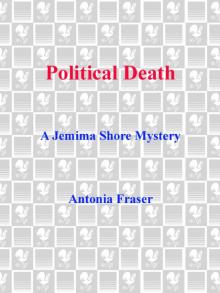 Political Death
Political Death Royal Charles: Charles II and the Restoration
Royal Charles: Charles II and the Restoration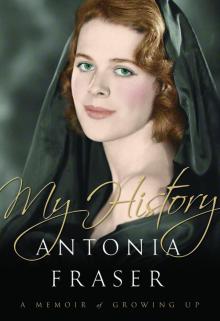 My History: A Memoir of Growing Up
My History: A Memoir of Growing Up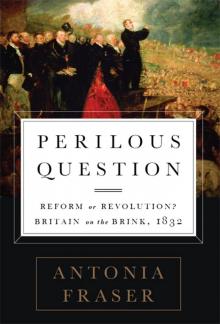 Perilous Question: Reform or Revolution? Britain on the Brink, 1832
Perilous Question: Reform or Revolution? Britain on the Brink, 1832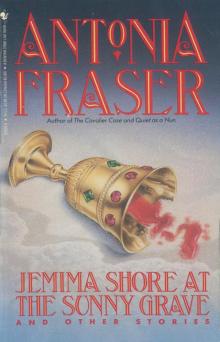 Jemima Shore at the Sunny Grave
Jemima Shore at the Sunny Grave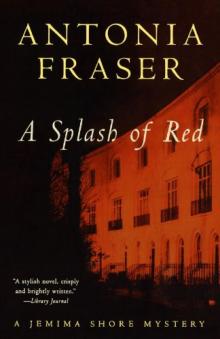 A Splash of Red
A Splash of Red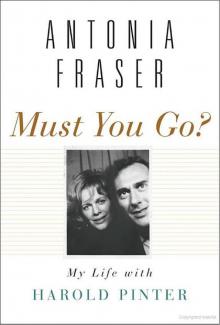 Must You Go?: My Life With Harold Pinter
Must You Go?: My Life With Harold Pinter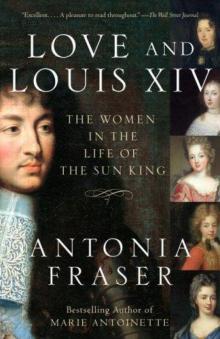 Love and Louis XIV: The Women in the Life of the Sun King
Love and Louis XIV: The Women in the Life of the Sun King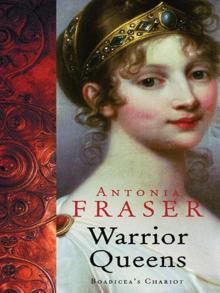 The Warrior Queens
The Warrior Queens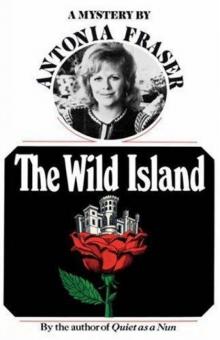 The Wild Island
The Wild Island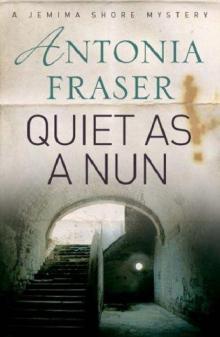 Quiet as a Nun
Quiet as a Nun Perilous Question
Perilous Question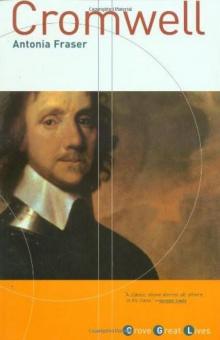 Cromwell, the Lord Protector
Cromwell, the Lord Protector Gunpowder Plots
Gunpowder Plots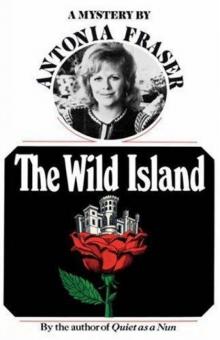 The Wild Island - Jemima Shore 02
The Wild Island - Jemima Shore 02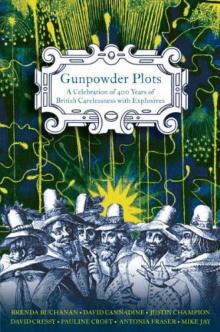 Gunpowder Plots: A Celebration of 400 Years of Bonfire Night
Gunpowder Plots: A Celebration of 400 Years of Bonfire Night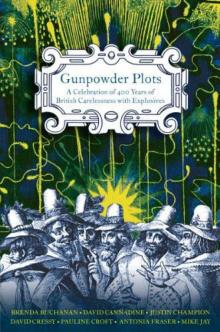 Gunpowder Plots_A Celebration of 400 Years of Bonfire Night
Gunpowder Plots_A Celebration of 400 Years of Bonfire Night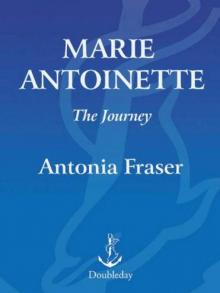 Marie Antoinette
Marie Antoinette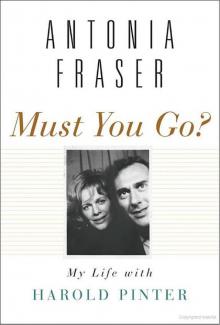 Must You Go?
Must You Go?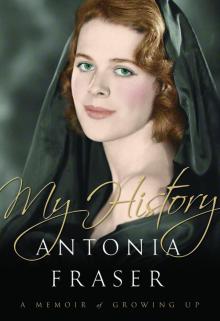 My History
My History